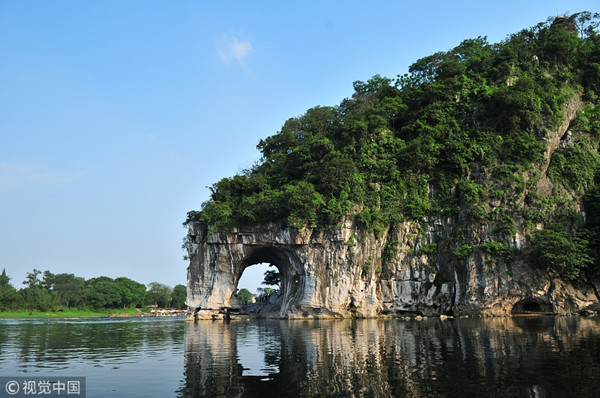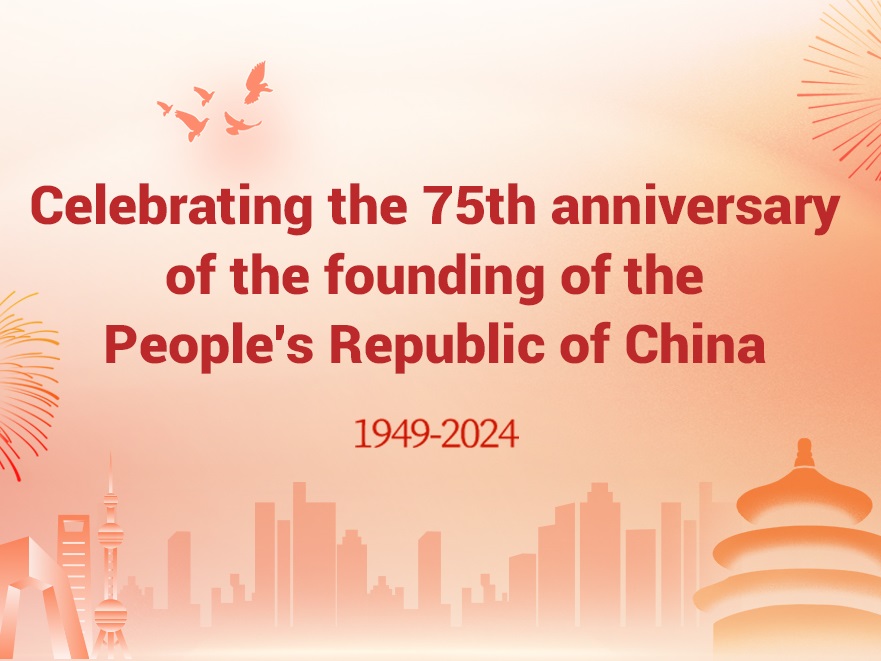Guilin

Elephant Trunk Hill in Guilin [Photo/VCG]
Guilin is located to the southwest of the Nanling Mountains. It sits at the southern end of the Hunan-Guangxi Corridor. Guilin is 236 kilometers from north to south and 189 kilometers from east to west. It borders Hunan Province to the north and northeast, Hezhou of Guangxi Zhuang autonomous region to the southeast, Wuzhou and Laibin to the south, and Liuzhou to the west and southwest. With a total area of 27,800 square kilometers (its downtown area is 866.36 square kilometers), Guilin accounts for 11.64 percent of the total area of Guangxi Zhuang autonomous region.
Guilin is located at the intersection of the three economic circles of the Pan-Pearl River Delta, Southwest China, and ASEAN. It is located at the intersection of the Chengdu-Chongqing Economic Zone, the Central Economic Experimental Zone, the Pan-Pearl River Delta Economic Zone, and the Pan-Beibu Gulf Economic Zone. Guilin has become a hub between the southwest and coastal economies and a hub connecting China and ASEAN. Guilin has convenient transportation and is the throat of the Lingnan and Yangtze River basins. Guilin Liangjiang International Airport is located in Liangjiang Town of Lingui District. The airport covers an area of 4.06 square kilometers. Currently, the airport has 96 flight routes and 75 destination cities. Guilin Liangjiang Airport will add and restore flights to Jakarta, Anqing, Hohhot, Xiangyang, Luoyang, Changzhi, Linfen, Baotou, Wutaishan and Shanghai Hongqiao in its autumn schedule. At present, Guilin has eight international and regional routes to Jakarta, Singapore, Kuala Lumpur, Incheon, Bangkok, Hong Kong and Taipei.
Guilin is a multi-ethnic area. Han, Zhuang, Miao, Yao, Dong, Hui, Jing, Yi, Shui, Man and other ethnic groups live in harmony in the city. The regional ethnic culture with multi-ethnic integration constitutes an important feature of Guilin's urban culture. Simple folk customs and unique regional cultures including farming, nomadic events, festivals, costumes, eating and drinking, weddings and funerals, architecture, language and religious beliefs make up Guilin's rich and colorful folk customs.
As a cultural city with a history of more than 2,000 years, Guilin has 1,099 identified tourism resources. Among them, 231 involve beautiful landscapes, 112 feature biological points of interest, 78 are hydrological sites; 364 are historical heritages, 164 have human interest displays, and 150 provide tourism services. Landscapes and human interest attractions are the main revenue sources.
Caves are a major feature of Guilin's tourism resources. Famous caves include Qixingyan Cave, Bailongdong Cave, Rudong Cave, Reed Flute Cave and Chuanshanyan Cave. Others are Fengyuyan Cave, Yinziyan Cave, Caopingguanyan Cave, Yongfuyan Cave, Century Glacier Spirit Buddha Cave and Guanyang Black Cave. They have all been developed since the Tang and Song dynasties.
The unique Guilin Karst Landforms became a world heritage site on June 23, 2014.
Guilin also has the ruins of the Zengpiyan Cave, the Lingqu Canal, Jingjiang Princes' Palace and Tomb, the Gongcheng Confucius Temple, the Guihai Forest of Steles, Xiangshan Temple, the Eighth Route Army Office, the former residence of Li Zongren and other cultural relics of great historical, literary, and artistic value.


